
The Tragedy of Hamlet, Prince of Denmark, often shortened to Hamlet, is a tragedy written by William Shakespeare sometime between 1599 and 1601. It is Shakespeare's longest play, with 29,551 words. Set in Denmark, the play depicts Prince Hamlet and his attempts to exact revenge against his uncle, Claudius, who has murdered Hamlet's father in order to seize his throne and marry Hamlet's mother.
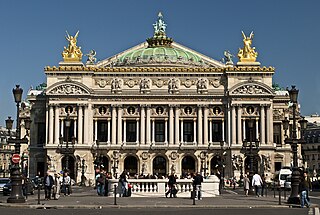
Opera is a form of theatre in which music is a fundamental component and dramatic roles are taken by singers. Such a "work" is typically a collaboration between a composer and a librettist and incorporates a number of the performing arts, such as acting, scenery, costume, and sometimes dance or ballet. The performance is typically given in an opera house, accompanied by an orchestra or smaller musical ensemble, which since the early 19th century has been led by a conductor. Although musical theatre is closely related to opera, the two are considered to be distinct from one another.

William Shakespeare was an English playwright, poet and actor. He is widely regarded as the greatest writer in the English language and the world's pre-eminent dramatist. He is often called England's national poet and the "Bard of Avon". His extant works, including collaborations, consist of some 39 plays, 154 sonnets, three long narrative poems, and a few other verses, some of uncertain authorship. His plays have been translated into every major living language and are performed more often than those of any other playwright. Shakespeare remains arguably the most influential writer in the English language, and his works continue to be studied and reinterpreted.

Tragedy is a genre of drama based on human suffering and, mainly, the terrible or sorrowful events that befall a main character. Traditionally, the intention of tragedy is to invoke an accompanying catharsis, or a "pain [that] awakens pleasure", for the audience. While many cultures have developed forms that provoke this paradoxical response, the term tragedy often refers to a specific tradition of drama that has played a unique and important role historically in the self-definition of Western civilization. That tradition has been multiple and discontinuous, yet the term has often been used to invoke a powerful effect of cultural identity and historical continuity—"the Greeks and the Elizabethans, in one cultural form; Hellenes and Christians, in a common activity," as Raymond Williams puts it.

A Greek chorus, or simply chorus, in the context of ancient Greek tragedy, comedy, satyr plays, and modern works inspired by them, is a homogeneous, non-individualised group of performers, who comment with a collective voice on the dramatic action. The chorus consisted of between 12 and 50 players, who variously danced, sang or spoke their lines in unison, and sometimes wore masks.
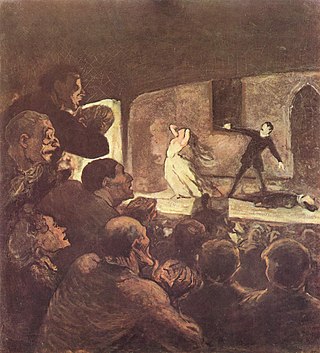
A modern melodrama is a dramatic work in which the plot, typically sensationalized and for a strong emotional appeal, takes precedence over detailed characterization. Melodramas typically concentrate on dialogue that is often bombastic or excessively sentimental, rather than action. Characters are often flat, and written to fulfill stereotypes. Melodramas are typically set in the private sphere of the home, focusing on morality and family issues, love, and marriage, often with challenges from an outside source, such as a "temptress", a scoundrel, or an aristocratic villain. A melodrama on stage, filmed, or on television is usually accompanied by dramatic and suggestive music that offers cues to the audience of the drama being presented.

B'hoy and g'hal were the prevailing slang words used to describe the young men and women of the rough-and-tumble working class culture of Lower Manhattan in the late 1840s and into the period of the American Civil War. They spoke a slang, with phrases such as "hi-hi", "lam him", and "cheese it".

The Bowery Theatre was a playhouse on the Bowery in the Lower East Side of Manhattan, New York City. Although it was founded by rich families to compete with the upscale Park Theatre, the Bowery saw its most successful period under the populist, pro-American management of Thomas Hamblin in the 1830s and 1840s. By the 1850s, the theatre came to cater to immigrant groups such as the Irish, Germans, and Chinese. It burned down four times in 17 years, a fire in 1929 destroying it for good. Although the theatre's name changed several times, it was generally referred to as the "Bowery Theatre".
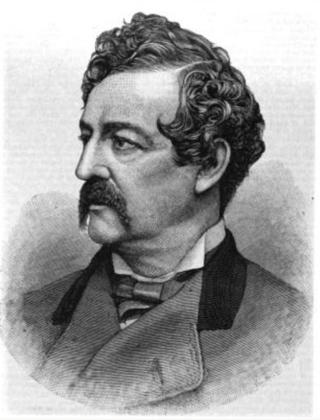
Francis S. Chanfrau was an American actor and theatre manager in the 19th century. He began his career playing bit parts and doing impressions of star actors such as Edwin Forrest and of ethnic groups.
Mose, Mosè, or Mosé is a given name which may refer to:

Jatra is a popular folk-theatre form Odia,Bengali theatre, spread throughout most of Odia, Bengali speaking areas of the Indian subcontinent, including Bangladesh and Indian states of Odisha, West Bengal, Assam and Tripura As of 2005, there were some 55 troupes based in Calcutta's old Jatra district, Chitpur Road, and all together, jatra is a $21m-a-year industry, performed on nearly 4,000 stages in West Bengal alone, where in 2001, over 300 companies employed over 20,000 people, more than the local film industry and urban theatre.
Petrushka is a stock character of Russian folk puppetry. It was first introduced by traveling Italian performers in the first third of the 19th century during a period of Westernization in Russian culture. While most core characters came from Italy, they were soon transformed by the addition of material from the Russian cultural context.' Petrushkas are traditionally hand puppets. The character is a kind of a jester, a slapstick protagonist distinguished by his red dress, a red kolpak, and often a long nose.

The Bowery Boys were a nativist, anti-Catholic, and anti-Irish criminal gang based in the Bowery neighborhood of Manhattan, New York City, in the early-mid-19th century. In contrast with the Irish immigrant tenement of the Five Points, one of the worst city slums in the United States, the Bowery was a more prosperous working-class community. Despite its reputation as one of the most notorious street gangs of New York City at the time, the majority of the Bowery Boys led law-abiding lives for the most part. The gang was made up exclusively of volunteer firemen—though some also worked as tradesmen, mechanics, and butchers —and would fight rival fire companies over who would extinguish a fire. The Bowery Boys often battled multiple outfits of the infamous Five Points, most notably the Dead Rabbits, with whom they feuded for decades. The uniform of a Bowery Boy generally consisted of a stovepipe hat in variable condition, a red shirt, and dark trousers tucked into boots—this style paying homage to their firemen roots.

Naturalism is a movement in European drama and theatre that developed in the late 19th and early 20th centuries. It refers to theatre that attempts to create an illusion of reality through a range of dramatic and theatrical strategies. Interest in naturalism especially flourished with the French playwrights of the time, but the most successful example is Strindberg's play Miss Julie, which was written with the intention to abide by both his own particular version of naturalism, and also the version described by the French novelist and literary theoretician, Emile Zola.
Syksey was the pseudonym of an American criminal and member of the Bowery Boys. He was supposedly the lieutenant and longtime companion to Mose the Fireboy during the 1840s, often the storyteller of his feats, and is credited for coining the phrase "hold 'de but", a common expression used during the mid-to late 19th century meaning to borrow a dead cigar or to "bum a smoke". He was later portrayed in Benjamin Baker's play Mose, the Bowery B'hoy which performed at the old Olympic Theater in 1849 and later toured throughout the United States during the late 1840s and 50s. His pseudonym may have been derived from Bill Sikes, the sidekick of gang leader Fagin from Oliver Twist.

Drama is the specific mode of fiction represented in performance: a play, opera, mime, ballet, etc., performed in a theatre, or on radio or television. Considered as a genre of poetry in general, the dramatic mode has been contrasted with the epic and the lyrical modes ever since Aristotle's Poetics —the earliest work of dramatic theory.
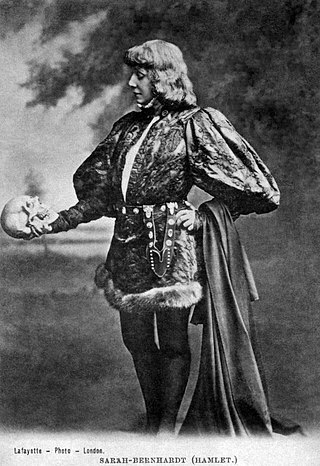
Theatre or theater is a collaborative form of performing art that uses live performers, usually actors or actresses, to present the experience of a real or imagined event before a live audience in a specific place, often a stage. The performers may communicate this experience to the audience through combinations of gesture, speech, song, music, and dance. It is the oldest form of drama, though live theatre has now been joined by modern recorded forms. Elements of art, such as painted scenery and stagecraft such as lighting are used to enhance the physicality, presence and immediacy of the experience. Places, normally buildings, where performances regularly take place are also called "theatres", as derived from the Ancient Greek θέατρον, itself from θεάομαι.
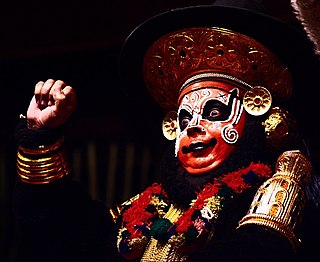
The history of theatre charts the development of theatre over the past 2,500 years. While performative elements are present in every society, it is customary to acknowledge a distinction between theatre as an art form and entertainment, and theatrical or performative elements in other activities. The history of theatre is primarily concerned with the origin and subsequent development of the theatre as an autonomous activity. Since classical Athens in the 5th century BC, vibrant traditions of theatre have flourished in cultures across the world.
Kit, the Arkansas Traveler or Kit, the Arkansas Traveller is a stage play written in 1868 for the American actor Francis S. Chanfrau. It is one of the landmarks of that century's American genre of border drama.

Maach is a form of folk theatre from the Malwa region of the Indian state of Madhya Pradesh.
















